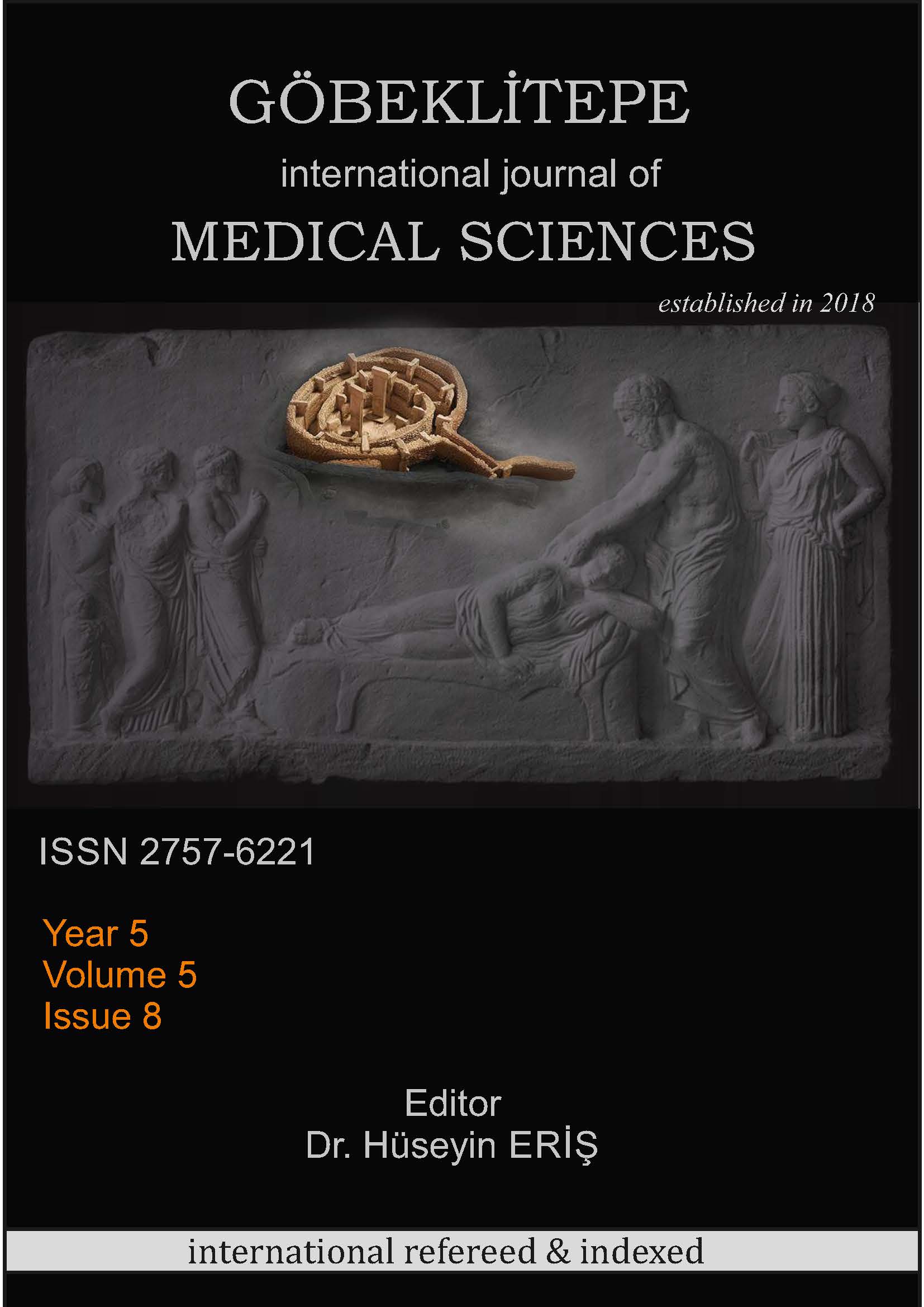ADOLESANLARDA PREMENSTRUAL SENDROM İLE YEME TUTUMU ARASINDAKİ İLİŞKİ
DOI:
https://doi.org/10.55433/gsbd.192Anahtar Kelimeler:
Adolesan, Yeme Tutumu, Premenstrual SendromÖzet
Bu çalışmanın amacı, adolesanlarda premenstrual sendrom semptomları ile yeme tutumları arasındaki ilişkinin belirlenmesidir. Gereç ve Yöntem: İlişki arayıcı araştırma tipinde yapılan bu çalışmada veriler 15-21 yaş arası 250 adolesandan elde edilmiştir. Veriler online anket formu aracılığı ile toplandı. Veri toplama aracı olarak Kişisel Bilgi Formu, Premenstrual Sendrom Ölçeği ve Yeme Tutum Testi Kısa Formu kullanıldı. Araştırma verilerinin değerlendirilmesinde tanımlayıcı istatistikler ile Pearson korelasyon analizi kullanıldı. Bulgular: Araştırmada adölesanların PMS ölçeği toplam puan ortalaması 44.34±39.74, YTT toplam puan ortalaması 13.41±10.00 olduğu saptandı. Araştırmaya katılan adolesanların %79.6’ sın da Premenstrual sendrom semptomlarının pozitif olduğu, %20.4’ünün yeme tutum bozukluğu olduğu saptandı. Premenstrual sendrom semptomları pozitif olan adolesanların %23.1’ inde istatistiksel anlamlı olarak yeme tutum bozukluğu olduğu saptandı (X2=4.430, p=.035). Adölesanların premenstrual sendrom ölçeği puanı arttıkça yeme tutum testi puanının arttığı, aralarında pozitif yönde istatistiksel olarak anlamlı zayıf bir ilişki olduğu saptandı (r=.181, p=.004). Sonuç: Araştırmada adölesanlarda premenstrual sendrom ile yeme tutumları arasında pozitif yönde zayıf bir ilişki olduğu, Premenstrual sendrom semptomlarını deneyimleyen adolesanların %23.1’ inde yeme tutum bozukluğu olduğu belirlenmiştir. Beslenme alışkanlığının düzenlenmesi, Premenstrual sendrom semptomlarını deneyimleyen adölesanların yaşam kalitesini ve genel sağlığının yükseltilmesinde etkili olacaktır





